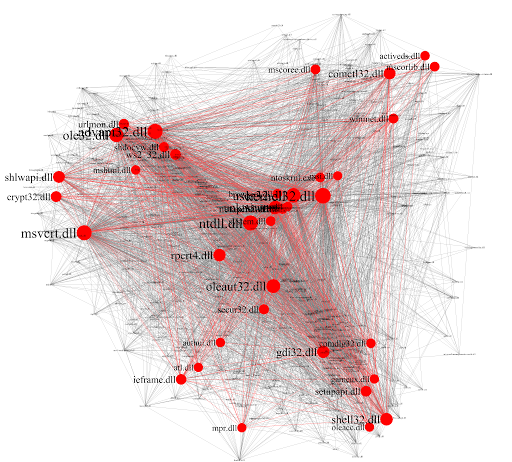How to build a Human Capital Management (HCM) SaaS Product?
You have experienced first-hand the changes in the HR solutions market and are ready to start your first Software-as-a-Service (SaaS) business, bringing your unique vision to Human Capital Management to, for example, the auto dealership market.

Human Capital Management Product Features
In the early days, you will want to spend more time and energy on the features that matter most to your target market, but soon, customers and potential buyers will ask for a more complete product. The roadmap expends.
A mature HCM product has the following features in one way or another:
Recruiting
Sourcing candidates
Company career pages and/or beautifully branded career micro-sites, posting to various job boards, career sites, and social media, as well as tracking which channels applicants come from. Employee referrals can also be incentivized by bonuses, which require a connection to the payroll module.
Applicant tracking system
Application forms, scheduling interviews, storing resumes, interaction history (email, phone, in-person), interview scores, feedback, and notes. Certain positions will also require verification of professional certifications, background checks, and/or drug testing.
Onboarding
Form filling and document submissions
Hand out the important materials (Employee manuals, etc.), collect signed documents and add all of them to the employee profile.
Create and revoke credentials to internal systems
Collaboration with IT, HR admins, or other teams to setup an employee for the first day of work.
Payroll, Taxes and Benefits
Payments to employees
Setting wages, transferring payments to employee bank accounts, etc.
Payroll tax obligations
Paying state and federal taxes on time, filling quarterly payroll tax documents, etc.
Manage benefits
Medical and dental insurance, payments into retirement accounts, etc.
Employee Information System
Digital library
HR policies, create and use multiple time-off policies and map them to specific locations, teams, departments, or shifts across the organization. and other documents important to distribute to the entire workforce.
Reminder e-mails
Reminders for employee to fill out their must-fill forms, as well as distribute policy changes, etc.
Employee profiles
Profile pictures, titles, reporting managers, and custom form fields for specific teams or offices.
Performance Management
Scheduling and shift planning
Manage time-off and unscheduled absences, find substitutes, access shared calendars and time tables, provide contact-less clock-in options.
Analytics
Standard deviation salary, spotting absenteeism trends, foreseeing leave trends, employee satisfaction with the work environment, etc. In settings where personal injury could be severe, or environmental consequences disastrous, the percentage of employees trained for specific behavior, and average overtime hours per person, will also be monitored closely.
Training and Talent Development Features
work-based learning
Deliver and track mandatory training on internal corporate policies (ex: safety, diversity, environmental sustainability) or product-specific handling (ex: tractors, airplanes, manufacturing robots). These features are typically served by a custom or full-fledged Learning Management System (LMS).
Tracking certifications
Track professional certifications as typically mandated by States to exercise a profession. Since those certifications expire, it is important for an employer to remain compliant to nudge employees to keep their licenses and certifications up-to-date by taking Continuous Education Units (CEUs) as required.
Human Capital Management as-a-Service Features
A pricing page, a registration page, and an account profile page are the first features you will think about in order to deliver your Human Capital Management for auto dealership products as Software-as-a-Service (SaaS).
Of course, customers expect a lot more standard features in a SaaS, especially an enterprise or B2B SaaS (Analysis shows up to 80% of a SaaS code base implements undifferentiated features like login, billing history, etc.). A mature HCM SaaS nonetheless requires to implementation of those features.
Registration
- Friction-less registration
- Email verification
- Welcome email
- Temporary disable registration
- Registered user notification
Account profiles
- Profile picture
- Standard default profile data fields
- Application-specific custom profile data
- Profile updated notification
- Delete profile (GDPR compliance)
 With DjaoDjin, you have enterprise-ready features as
With DjaoDjin, you have enterprise-ready features as
Checkout
- Shopping cart customized for subscription purchases
- Redeem discount at any point
- Option to pay multiple periods in advance
- HTML, Email and PDF charge receipts
- Balance due notification
Subscription management
- Billing history
- Active and past subscriptions
- Unsubscribe-now option
- Monthly and yearly plans
- Renewal notification
- Expiration notification
Dashboards
- Engagement with product features
- Daily active users
- Recently active users
- Subscription plans
- Discounts
- Active and churned subscribers
- New, churn and total sales
- New, churn and total customers
- Income, backlog and receivables balances
 With DjaoDjin, you have enterprise-ready features as
With DjaoDjin, you have enterprise-ready features as
Landing pages
- Homepage
- Pricing page
- Contact-us form
- Terms-of-use page
Access Control
- Role-based access control
- Billing-based access control
- Accept terms of use
- Multiple roles on a profile
- Multiple organization profiles per user
- Invite and accept role on a profile (double opt-in)
- Request and grant role on a profile (double opt-in)
- Session debugging tools
Error pages
- 40x Permission denied, not found, etc.
- 50x server error (Ooops)
 With DjaoDjin, you have enterprise-ready features as
With DjaoDjin, you have enterprise-ready features as
Delivering a Human Capital Management Product as-a-Service
Now that you have narrowed down the features of your Minimum Viable Product (MVP) for Human Capital Management targeting auto dealerships, it is time to think about the concrete steps to build it. In practice, most of the choices will boil down to the type of technical co-founder you have. Nonetheless, that means picking:
Hosting provider
The considerations for picking a hosting provider, whether it is an Infrastructure-as-a-Service (IaaS) or Platform-as-a-Service (PaaS) provider, typically include
- availability, i.e. the ability for users to reach your site over the Internet, and how long they have to wait before receiving a page result. (related glossary: DNS, CDN, load-balancer)
- cyber-security, i.e. underlying security of the physical machines, and built-in pre-configured network security of the platform (related glossary: TLS, WAF) that are the basis for your SaaS to meet compliance requirements (related glossary: PCI, GDPR, HIPAA).
- multi-tenancy, i.e. the ability to support multiple customers, where each customer/tenant's data is isolated and remains invisible to other tenants.
- whitelabeling, i.e. the ability for your customers to customize logos, pages, and up to the domain name your SaaS is served under.
- technical support, i.e. how responsive and useful the hosting provider's technical staff is to your inquiries.
Technology stack
The considerations for picking a technology stack, for example PHP/Laravel, Javascript/Express, Ruby/Rails, or Python/Django, typically include
- porting to mobile devices
- integrating with OpenAPI tools
- implementing Machine Learning (ML) algorithms
- maturity and size of the language/framework community

Deployment workflow
For your SaaS to remain competitive, your team must be productive. Features must be scheduled, developed, tested, and deployed to a production environment reliably and often enough. The considerations for picking a DevOps workflow typically include
- Agile frameworks supported
- Source Code Repository platform
- Build Artifacts
- Testing Infrastructure

 How can DjaoDjin help?
How can DjaoDjin help?
Photo of salesperson and buyer by Nontanun Chaiprakon.
